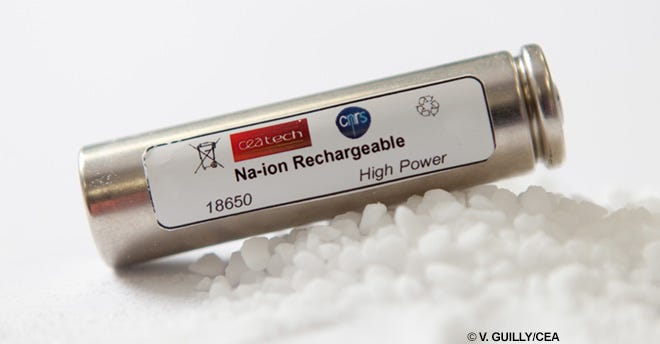Sodium ion batteries have recently emerged as a lower cost replacement to lithium iron phosphate chemistries. Just as the market was considering a large shift to LFP, China’s CATL made an announcement suggesting that Na-ion batteries are in the not so distant future.
I am highlighting a recent paper from researchers at the National University of Singapore (reference 1) that clearly lays out the case for prussian white, a sodium ion active material.
The sodium ion active material is the crucial element for bringing this low cost battery to the masses. A mild, low temperature synthesis of prussian white can be conducted using a sodium borohydride reducing agent. The material was used to make a half cell and it attained a specific capacity of 169 mAh/g +/-4, which is about 99% of it’s theoretical value.
The Reaction
Sodium ferrocyanide is dissolved in an acid solution and then another acid is added (see full paper for details). The combination is mixed on heat at 80C to create prussian blue. The reducing agent is then added to PB and allowed to mix to reduce to prussian white.
Why is Prussian White better?
Prussian blue is a very common active material with specific capacity of 153 mAh/g as previously reported by the authors (2). By simply comparing the theoretical capacities it validates the benefit of further reducing PB to PW (+12% in capacity). The authors state that the use of an acid during synthesis and a vacuum-heat-drying treatment enables the formation of sodium ion active materials that were thought unattainable. As shown below, the PW sample that was subjected to a 200C vacuum-heat-drying treatment showed the distinct formation of cracks on the crystal surface. These small voids could theoretically enable deeper percolation of sodium ions which leads to higher capacities.
The authors also performed TGA-MS to analyze the moisture content and heat stability of the materials. The room temperature dried sample contained about 12% residual moisture, while the 200C dried had minimal. Prussian white samples also had less water content when compared to the prussian blue counterparts. See the left image below.
A temperature ramp study (below right) was employed to determine the degradation point of the materials, and it was found that prussian white degraded at a much higher temperature compared to prussian blue (~450C vs. 275C).
Both of these analytical techniques suggest that PW is significantly more stable and would most likely perform better in lithium ion batteries.
Electrochemical Performance
Prussian white half cells display the maximum specific capacity and initial charge/discharge profiles. The full cell rate capability testing in the bottom image displays the improved performance of prussian white.
Conclusions and Thoughts:
The research paper clearly demonstrates the synthesis of prussian white and validates the extra synthesis step to produce a sodium ion active material with higher specific capacity and temperature stability. Prussian white has a similar specific capacity compared to LFP, so this may serve as a reference point for researchers attempting to design future low cost cells and batteries. The past couple decades have focused on increasing energy density of batteries, but as range anxiety lessens we could witness a dramatic shift away from nickel, manganese, and cobalt containing batteries.
References:
Prussian White with Near-Maximum Specific Capacity in Sodium-Ion Batteries. Cheryldine Q. X. Lim and Zhi-Kuang Tan. ACS Applied Energy Materials 20214 (6), 6214-6220. DOI: 10.1021/acsaem.1c00987
Prussian Blue Rechargeable Battery. Cheryldine Q. X. Lim, et al.
Further Reading on Sodium Ion









